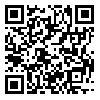Volume 4, Issue 3 (9-2019)
IJREE 2019, 4(3): 100-114 |
Back to browse issues page
Download citation:
BibTeX | RIS | EndNote | Medlars | ProCite | Reference Manager | RefWorks
Send citation to:



BibTeX | RIS | EndNote | Medlars | ProCite | Reference Manager | RefWorks
Send citation to:
Karbalaei A, Kord Afshari M. The Role of Innovative Concordnacing Instruction Method in Improving Iranian EFL learners’ Vocabulary. IJREE 2019; 4 (3)
URL: http://ijreeonline.com/article-1-197-en.html
URL: http://ijreeonline.com/article-1-197-en.html
Department of English, Farhangian University, Tehran, Iran
Abstract: (4300 Views)
Vocabulary plays a pivotal role in second language learning and development. Concordance-based methods are considered as new techniques for improving teaching materials and motivating learners to improve their language ability with authentic texts. To this end, the present study aims to enhance the effect of Innovative Concordancing Instruction (ICI) on vocabulary knowledge by integrating principled instructional approaches. The participants included 90 university students at undergraduate level in Islamic Azad University in Tehran, Iran. First, after giving a proficiency test, the students were divided into innovative concordancing, traditional concordancing and control group. The participants in both experimental groups were given eight-week vocabulary instruction, while no special vocabulary instruction was considered for the sample in the control group. Based on the results, ICI had both better immediate and delayed instructional effects on increasing receptive and productive knowledge although the students in instructional groups improved in terms of receptive and productive knowledge. The present study could present some implications for teaching vocabulary when designing vocabulary curricula and developing materials for EFL learners and teachers.
Keywords: Innovative Concordancing Instruction,Traditional Concordancing Instruction,vocabulary,EFL context
References
1. Atay, D., & Kurt, G. (2006). Elementary school EFL learners' vocabulary learning: The effects of post-reading activities. The Canadian Modern Language Review, 63(2), 255-273. doi.org/10.3138/cmlr.63.2.255. [DOI:10.3138/cmlr.63.2.255]
2. Atay, D., & Ozbulgan, C. (2007). Memory strategy instruction, contextual learning and ESP vocabulary recall. English for Specific Purposes, 26(1), 39-51. [DOI:10.1016/j.esp.2006.01.002]
3. Bahns, J., & Eldaw, M. (1993). Should we teach EFL students collocations? System, 21(1), 101-114. [DOI:10.1016/0346-251X(93)90010-E]
4. Cobb, T. (1999). Breadth and depth of lexical acquisition with hands-on concrodancing. Computer Assisted Language Learning, 12(4), 345-360. doi: 10.1076/call.12.4.345.5699 [DOI:10.1076/call.12.4.345.5699]
5. Coxhead, A., & Byrd, P. (2007). Preparing writing teachers to teach the vocabulary and grammar of academic prose. Journal of Second Language Writing, 16(3), 129-147. http://dx.doi.org/10.1016/j.jslw.2007.07.002 [DOI:10.1016/j.jslw.2007.07.002]
6. de la Fuente, M. J. (2006). Classroom L2 vocabulary acquisition: investigating the role of pedagogical tasks and form-focused instruction. Language Testing Research, 10(3), 263-295. doi.org/10.1191/1362168806lr196oa [DOI:10.1191/1362168806lr196oa]
7. Gan, S. L., Low, F., & Yaakub, N. (1996). Modeling teaching with a computer-based concordancer in a TESL pre-service teacher education program. Journal of Computing in Teacher Education, 12(4), 28-32. doi: 10.1080/10402454.1996.10784301
8. Gass, S. M., & Selinker, L. (2001). Second language acquisition: An introductory course (2nd edition). Mahwah, NJ: Lawrence Erlbaum Associates.
9. Ghadirian, S. (2002). Providing controlled exposure to target vocabulary through the screening and arranging of texts. Language Learning & Technology, 6(1), 147-164. Retrieved April, 2018 from https://www.lltjournal.org/item/2377
10. Grabe, W. (2009). Reading in a second language: Moving/rom theory to practice. Cambridge: Cambridge University Press. [DOI:10.1017/CBO9781139150484]
11. Horst, M., Cobb, T., & Nicolae, I. (2005). Expanding academic vocabulary with an interactive on-line database. Language Learning, & Technology, 9(2), 90-110 Retrieved March, 2018 from https://www.lltjournal.org/item/2508
12. Hunston, S. (2002). Corpora in applied linguistics. Cambridge: Cambridge University Press. [DOI:10.1017/CBO9781139524773]
13. Kaur, J., & Hegelheimer, V. (2005). ESL students' use of concordance in the transfer of academic word knowledge: An exploratory study. Computer Assisted Language Learning, 18(4), 287-310. [DOI:10.1080/09588220500280412]
14. Koda, K. (2005). Insights into second language reading. NY: Cambridge University Press. [DOI:10.1017/CBO9781139524841]
15. Laufer, B. (2003). Vocabulary acquisition in a second language: Do learners really acquire most vocabulary by reading? Some empirical evidence. The Canadian Modern Language Review, 59(4), 567-587.
https://doi.org/10.3138/cmlr.59.4.567 [DOI:10.3138/cmlr.59.4.567.]
16. Laufer, B., & Hulsjin, L. (2001). Incidental vocabulary acquisition in a second language: The construct of task-induced involvement. Applied Linguistics, 2(1), 1-26.
https://doi.org/10.1093/applin/22.1.1 [DOI:10.1093/applin/22.1.1.]
17. Meara, P., & Fitzpatrick, T. (2000). Lex30: An improved method of assessing productive vocabulary in an L2. System, 28(1), 19-30. http://dx.doi.org/10.1016/S0346-251X(99)00058-5. [DOI:10.1016/S0346-251X(99)00058-5]
18. Nation, I. S. P. (1990). Teaching and learning vocabulary. Boston: Heinle & Heinle Publishers.
19. Nation, I. S. P. (2008). Teaching vocabulary: Strategies and techniques. MA: Heinle.
20. Nesselhauf, N. (2004). Collocations in a learner corpus. Philadelphia: John Benjamins. [DOI:10.1075/scl.14]
21. Newton, J. (1995). Task-based interaction and incidental vocabulary learning: A case study. Second Language Research, 11(2), 159-177. [DOI:10.1177/026765839501100207]
22. Paribakht, T. S., & Wesche, (1998). The relationship between passive and active vocabularies: Effects of language learning context. Language Learning, 48(4), 365 391. [DOI:10.1111/0023-8333.00046]
23. Read, J. (2000). Assessing vocabulary. Cambridge: Cambridge University Press. [DOI:10.1017/CBO9780511732942]
24. Rott, S. (1999). The effect of exposure frequency on intermediate language learners' incidental vocabulary acquisition and retention through reading. Studies in Second Language Acquisition, 21(4), 589-620.
https://doi.org/10.1017/S0272263199004039 [DOI:10.1017/S0272263199004039.]
25. Schmitt, N. (1998). Tracking the incremental acquisition of second language vocabulary: A longitudinal study. Language Learning, 48(2), 281-317. [DOI:10.1111/1467-9922.00042]
26. Schmitt, N. (2000). Vocabulary in language teaching. Cambridge: Cambridge University Press.
27. Schmitt, N. (2008). Instructed second language vocabulary learning. Language Teaching Research, 12, 329-363.
https://doi.org/10.1177/1362168808089921 [DOI:10.1177/1362168808089921.]
28. Seliger, H. W., & Shohamy, E. (1989). Second language research methods. Oxford: Oxford University Press.
29. Supathanon, P. (2005). A comparison of the effects of the concordance-based and the conventional teaching methods on engineering students' English vocabulary learning. Unpublished doctoral dissertation, Chulalongkorn University, Thailand.
Send email to the article author
| Rights and permissions | |
 |
This work is licensed under a Creative Commons Attribution-NonCommercial 4.0 International License. |






